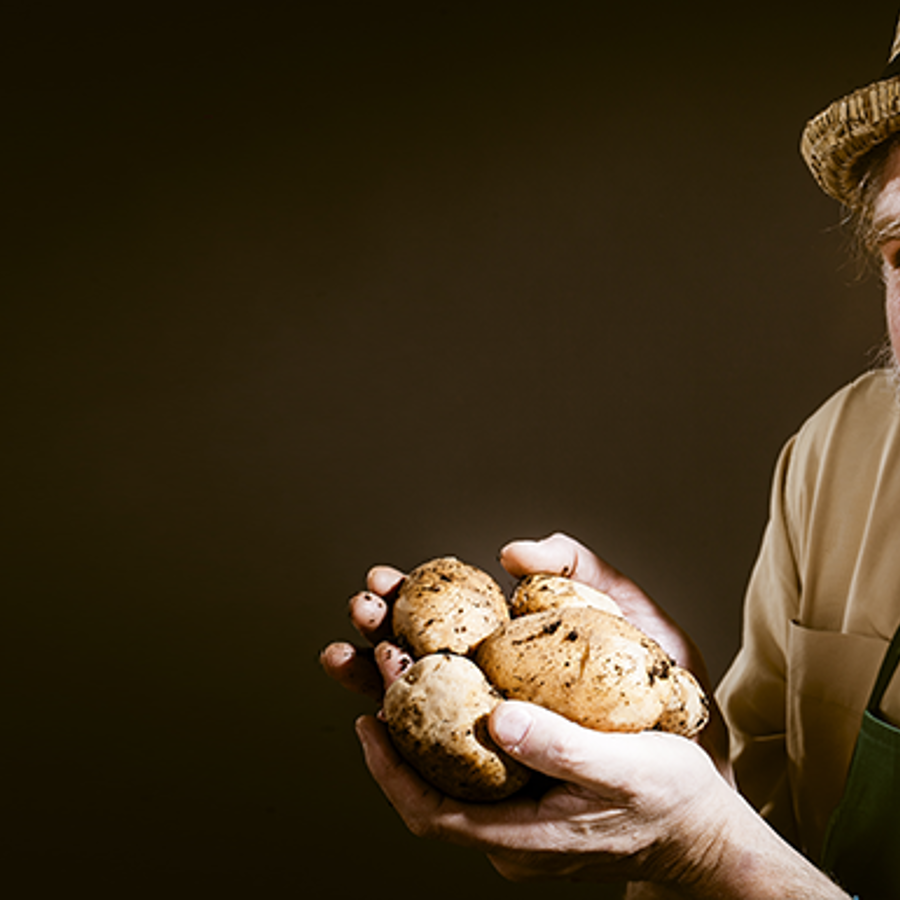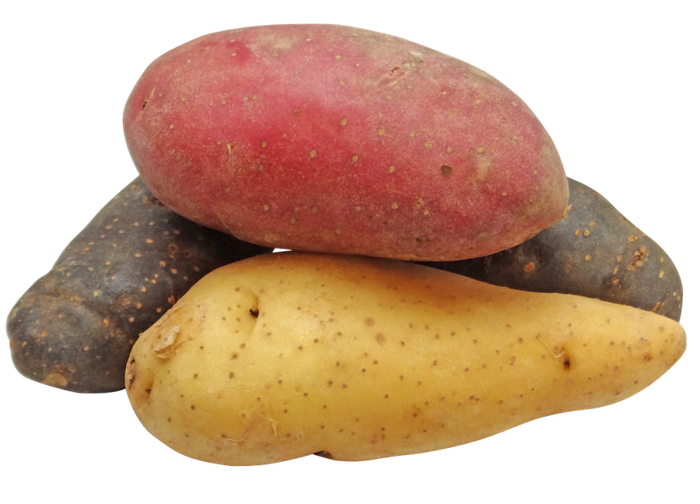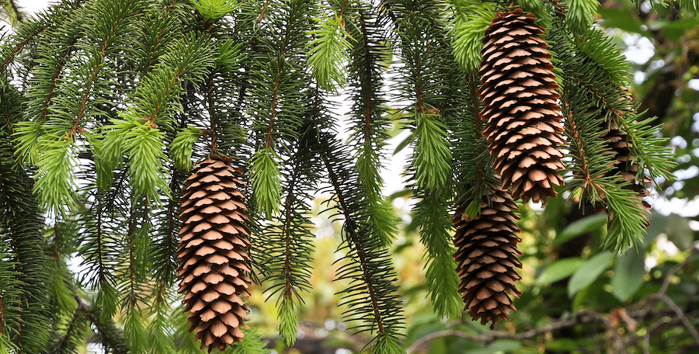
Why do potatoes have more chromosomes than humans?
May 25, 2017

- Related Topics:
- Comparing species,
- Evolution,
- Chromosomes,
- Genomics
A middle school student from Florida asks:
"Why do potatoes have more chromosomes than humans?"
Just the luck of the draw during evolution. Over millions of years, potatoes happened to end up with 48 and we ended up with 46. And there are even bigger differences out there.
A carp (a kind of fish) has 104 and a rattlesnake fern has 184. Most likely neither of these is as complicated as we are (especially the fern).
These kinds of differences are out there because the number of chromosomes doesn’t have anything to do with how complicated or “advanced” a living thing is. What matters is what is on them.
Your fewer chromosomes have the set of instructions for making you and a potato’s chromosomes have the set of instructions for making a potato plant. It doesn’t matter how many pieces those instructions are cut up into.
Think about it like comparing the instructions for building a car to the instructions for building a bicycle.
Let’s say the car’s instructions are in one big book but the bicycle’s instructions are spread over five books. Making a bicycle isn’t more complicated than a car just because it is in five books instead of one. Same thing with your chromosomes and a potato’s chromosomes.
It also doesn’t always have to do with how many “pages” or even sets of instructions are in something’s chromosomes.

It Isn’t the Amount of DNA…
Imagine the car’s instructions are written really small and the bicycle’s are written really large. The car is still more complicated even though it is written over fewer pages.
The same thing is true with your chromosomes except instead of pages, they are made up of DNA. More DNA does not mean more complexity.
You have just over three billion base pairs of DNA (base pairs are just one way to measure the amount of DNA). In comparison, the skeleton fork fern, a pretty primitive plant, has close to 300 billion base pairs.
This much simpler organism has 100 times the DNA that you do. If you have 300 pages of instructions, it has 30,000 pages!
…Or the Number of Genes Either
And it isn’t the number of instructions either. In our chromosomes, each specific instruction is a section of DNA called a gene. In humans, about 2% of the DNA is genes.
Current estimates are that we have around 21,000 or so genes. Some simpler beasts like the common bacterium E. coli have fewer like we’d expect. E. coli has only about 4,400.
But the little weed thale cress has over 27,000 genes. And the water flea has even more — over 31,000 genes.
Again you are clearly more complicated than a little flowering plant or a water flea. This is true even though you have fewer genes.
The granddaddy of comparisons is humans to the Norway spruce. This tree has 48 chromosomes compared to our 46, 20 billion base pairs of DNA compared to our 3 billion, and over 28,000 genes compared to our 21,000. This tree beats us in every category!

Number of Chromosomes Not Constant
And finally, the number of chromosomes can and does change over time. A million or two years ago, people had the same number of chromosomes as today’s potatoes — 48.
Then two chromosomes ended up stuck together. Now most every human has 46 instead of 48.
Our ancestors with more chromosomes weren’t more advanced than us. They just had their DNA packaged a bit differently.
This process is still going on today. A man in China has 44 chromosomes but is perfectly normal (except for some problems having kids). Two of his chromosomes stuck together as happened to our ancestors a million or so years ago.
Numbers Don’t Matter
So the number of chromosomes has nothing to do with what or how complicated something is. And neither does the number of genes or the number of base pairs of DNA.
What matters is what those genes are and how the cells and the organism use its set of genes. This is what makes a dog a dog and a dove a dove even though they both have 78 chromosomes. Which of course is way more than we do!

Author: Dr. D. Barry Starr
Barry served as The Tech Geneticist from 2002-2018. He founded Ask-a-Geneticist, answered thousands of questions submitted by people from all around the world, and oversaw and edited all articles published during his tenure. AAG is part of the Stanford at The Tech program, which brings Stanford scientists to The Tech to answer questions for this site, as well as to run science activities with visitors at The Tech Interactive in downtown San Jose.
 Skip Navigation
Skip Navigation
